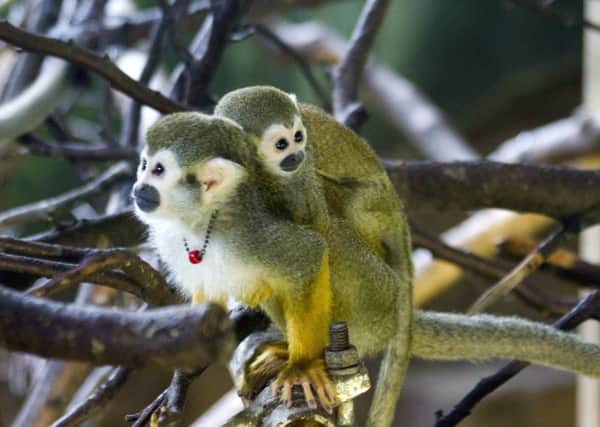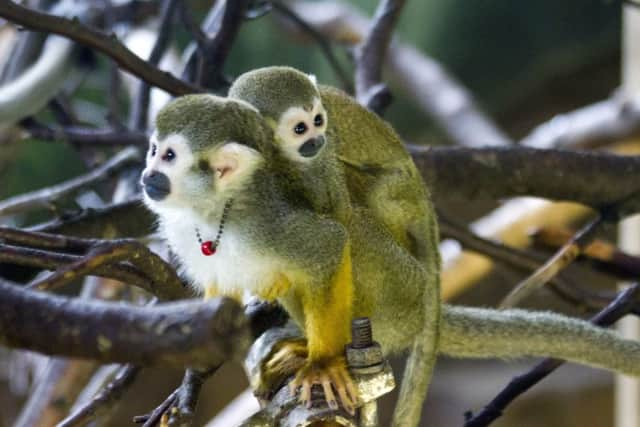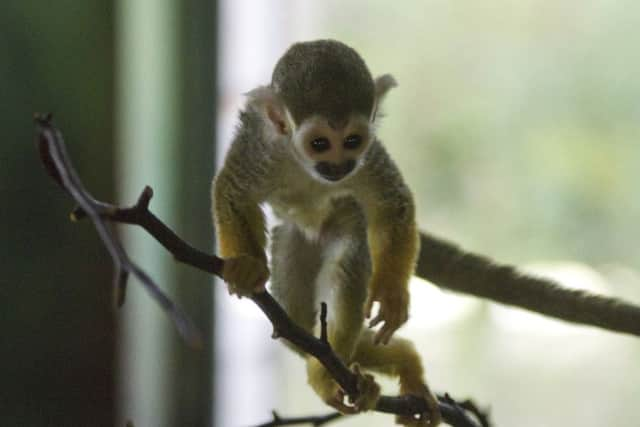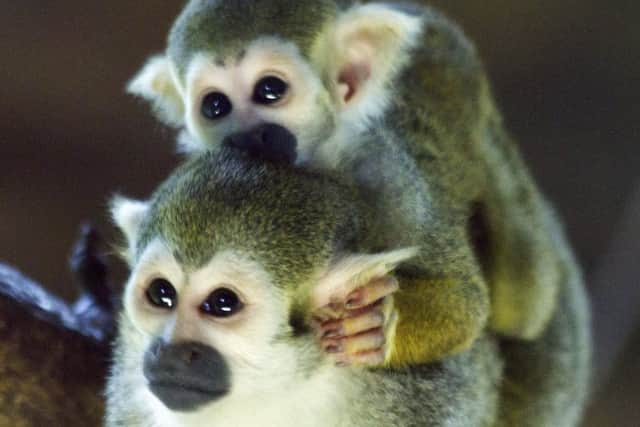Four baby squirrel monkeys born in Edinburgh Zoo


The youngsters were born in July and August at Living Links, a field station and research centre at Edinburgh Zoo.
The tiny babies currently spend their time clinging to their mothers but will soon begin to explore their surroundings as they become more independent.
Advertisement
Hide AdAdvertisement
Hide AdLiving Links is a partnership between the University of St Andrews and the Royal Zoological Society of Scotland (RZSS), and supports studies by scientists affiliated with the Scottish Primate Research Group.


The four newborn common squirrel monkeys may one day contribute to research at the facility.
Donald Gow, team leader for Living Links and Budongo at RZSS Edinburgh Zoo, said: “All four of the squirrel monkey babies are doing really well and whilst they are still clinging to their mothers, they will soon become more independent and start exploring their surroundings on their own.
“Taking part in training and research at Living Links is entirely voluntary, so once the youngsters get a bit older they will be able to take part if they wish. The training is fun for them and they always get rewarded with treats, so they are normally quite enthusiastic to take part.”
The squirrel monkeys at Living Links are mixed with capuchins in the same enclosure to promote natural interactions, as well as to provide enrichment for both species.


Living Links is divided into two enclosures which are mirror images of each other, allowing for comparative studies between the groups in each enclosure.
Most of the research at the centre focuses on cognitive, psychological and behavioural studies, as well as evolutionary development.
Training is voluntary and uses positive reinforcement or is merely observational, such as seeing how the monkeys interact with different objects, their ability to use tools or whether they are able to share items.
Advertisement
Hide AdAdvertisement
Hide AdSquirrel monkeys are native to the tropical forests of Central and South America.


There are five species of squirrel monkey: the common squirrel monkey; black-capped squirrel monkey; the Central American squirrel monkey; the golden-backed squirrel monkey; and the black-headed squirrel monkey, all of which are quite similar in appearance.